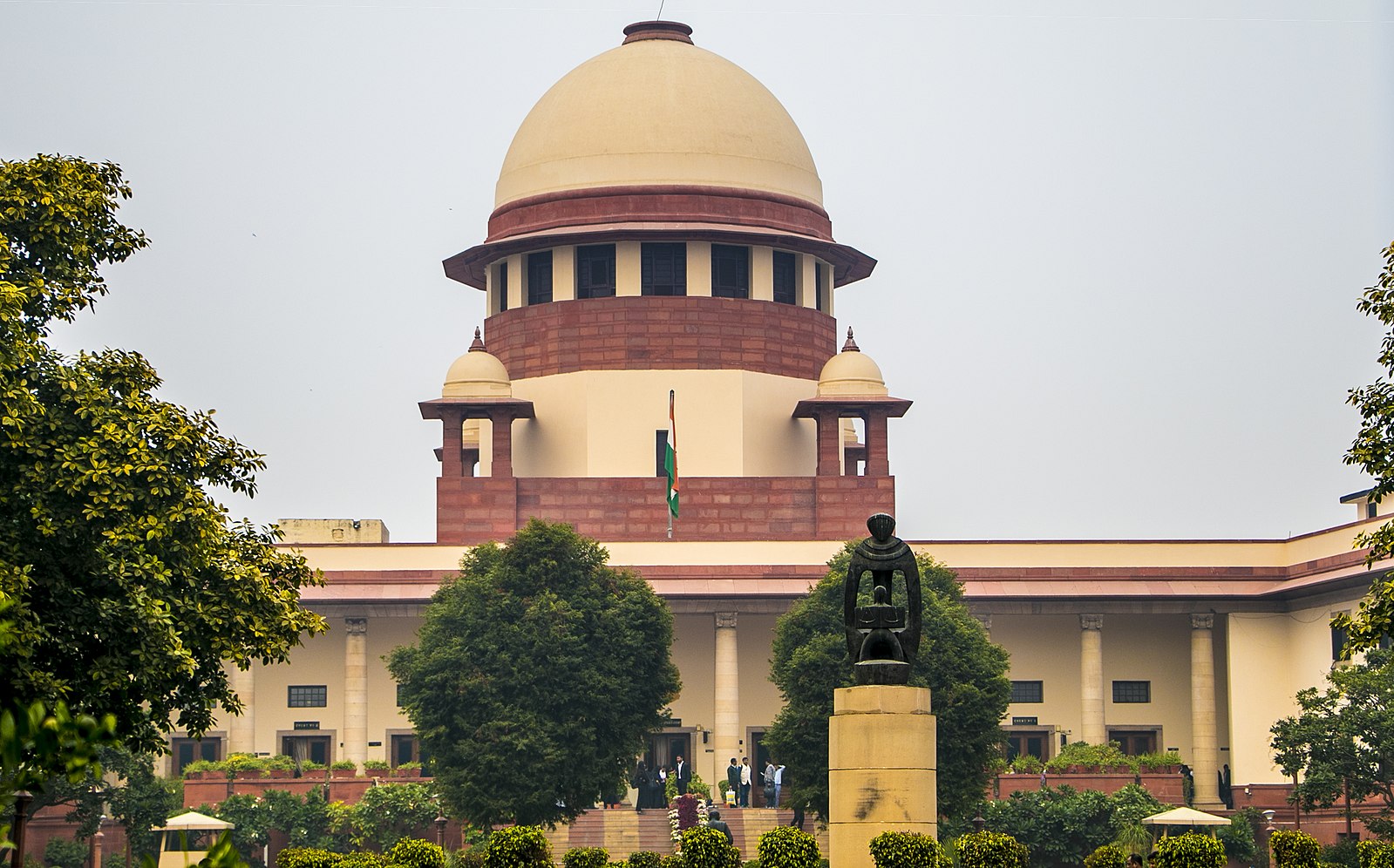Time To End India’s War on Sedition
The offense of sedition, introduced by the colonial British government to criminalize dissent, continues to be on India’s statute books 70 years after independence. It’s time for India’s Supreme Court to hold the draconian law unconstitutional.

Published by The Lawfare Institute
in Cooperation With

What do a 22-year-old climate activist, a journalist reporting on a gang rape case and a politician supporting a farmers’ protest have in common? They have all recently been charged with sedition as part of Prime Minister Narendra Modi’s government's wider crackdown on free speech targeting journalists, leaders of the opposition, protestors, students and even inconspicuous civilians. One part of this crackdown is the newly introduced and controversial Information Technology Rules, 2021 that drastically alter India’s intermediary liability framework and provide for the imposition of individual criminal liability on tech executives. This has raised a storm between Twitter, WhatsApp and the Union government. However, the much older Section 124A of the Indian Penal code, which criminalizes sedition and gives police the power to arrest without a warrant, is one of the most acute threats to both online and offline speech in India. With the Indian Supreme Court now about to determine the constitutionality of Section 124A, the stakes could not be higher for the future of free speech in the world´s largest democracy.
Colonial Legacy and Post-Colonial Retainment
Sedition was made a punishable offense by the colonial British government in 1860. As a British colonial officer later explained, such laws were deemed necessary because Indians were “[c]redulous to a degree which is difficult for us to understand, traditionally disposed to believe evil of his government, difficult to arouse, perhaps, but emotional and inflammable.”
On March 18, 1922, Mahatma Gandhi was put on trial for violating Section 124A for “attempting to excite disaffection towards His Majesty’s Government, established by law in British India.” In his famous trial speech, Gandhi enthusiastically pleaded guilty to sedition and stingingly attacked Section 124A as being “designed to suppress the liberty of the citizen.” He insisted that “affection cannot be manufactured or regulated by law. If one has no affection for a person or system, one should be free to give the fullest expression to his disaffection, so long as he does not contemplate, promote or incite to violence.” Through his defense, Gandhi converted the sedition charge against him into a passionate argument of why “exciting disaffection” against the government was “the highest duty of the citizen.” Despite his eloquence, Gandhi was sentenced to six years in prison for his non-violent protests against British oppression. He joined the list of other Indian freedom fighters, such as Bal Gangadhar Tilak, who had been sentenced to prison for committing sedition.
Sedition remained on the statute books after India became independent in 1947. Today, Section 124A lays down that anybody who “brings or attempts to bring into hatred or contempt … disaffection towards the Government established in India” shall be punished with a sentence that might extend to life imprisonment. The section explains that “comments expressing disapprobation of the administrative or other action of the Government without exciting or attempting to excite hatred ... do not constitute an offence under the section.” Ironically, while this colonial provision still survives in India, it was abolished in England in 2009 through the Coroners and Justice Act, 2009.
The Supreme Court on What Constitutes Sedition
In 1962, Section 124A’s constitutional validity was challenged before India’s Supreme Court. In Kedar Nath v. Union of India, the Supreme Court held that, although sedition imposes restrictions on the right to freedom of speech and expression under Article 19(1)(a) of the Constitution, the restrictions are in the interest of public order and within the ambit of permissible legislative interference. However, the court narrowed its application by holding that to meet the threshold of exciting disaffection or hatred, the alleged seditious conduct must incite violence against the state—mere criticism is not enough.
Judges of higher courts have reiterated this high threshold over the years. For example, Justice A.P. Shah explained recently that “regardless of whether [the] slogans were anti-national, hateful, or an expression of contempt and disdain against the government, as long as they did not incite violence, they do not get covered under sedition.” Despite these clarifications, successive governments have misused the provision to silence non-violent dissent, target journalists, make an example of activists and chill rebellion among young people.
Rampant Abuse By Successive Governments
Between 2014 and 2020, 519 sedition cases were reported. This number demonstrates a 28 percent increase since Modi became prime minister in 2014. Modi’s government is not alone in misusing sedition; it was rampantly misused by previous governments as well. In 2011, thousands of sedition cases were registered against persons in an entire village in Tamil Nadu for protesting against the setting up of the Kudankulam nuclear power plant. In 2012, Aseem Trivedi, a cartoonist, was infamously charged with sedition for drawing a mocking cartoon of Mamata Banerjee (the current chief minister of West Bengal and now one of the most formidable opposition leaders) during the nationwide anti-grant movement. However, while the number of cases registered and arrests under Section 124A has increased every year, conviction rates have remained low.
The Charge is the Punishment
The National Crime Records Bureau revealed that, in 2019, the number of sedition cases registered rose to 93 from 70 in 2018, but the conviction rate decreased from 15.8 percent in 2018 to a mere 3.3 percent in 2019. This 3.3 percent conviction rate is abysmally low as compared to the approximately 50 percent conviction rate for all offenses under the Indian Penal Code combined. This anomaly of increased cases but decreased convictions in 2019 might be explained by the fact that India suffers from a high judicial pendency rate. If a person is accused of a serious offense such as sedition, a trial might drag on for years. In such cases, even when an accused person is acquitted by a court, she may have already suffered years of legal expenses, a prolonged investigation by the authorities, multiple court appearances and even incarceration during the trial. Given this scenario, free speech is chilled by virtue of sedition being present on the statute books. This means that often the mere accusation of committing an offense is on its own a significant punishment as cases might drag on for years.
A Cautionary Tale
On May 31, the Indian Supreme Court quashed sedition charges against veteran journalist Vinod Dua and reignited the debate around sedition in India. Dua was accused of sedition by a leader of the ruling Bharatiya Janata Party when he uploaded a video in March 2020. In the video, Dua accused Modi of grave mismanagement for imposing a nationwide lockdown without notice and letting migrant laborers walk hundreds of miles to get back to their villages. The court’s order has renewed hope that sedition may be declared unconstitutional. A three-judge bench of the Supreme Court will hear a constitutional challenge to Section 124A next month, and given its recent findings in the Dua case, lawyers and free speech activists are hopeful of the provision being finally struck down around 75 years after independence.
Despite its best intentions, the Supreme Court could repeat history and merely clarify the scope of sedition (incitement to violence) as it did in Kedar Nath or more recently in Common Cause v. Union of India (2016). A reiteration of this narrow reading might continue the abuse of this provision. The problem is not that the limits of Section 124A are currently undefined but, rather, that 124A exists on the statute books in the first place. As India awaits the outcome in this constitutional challenge, the misuse of this colonial penal provision for curbing dissent is a cautionary tale about the potential for abuse when outdated speech crimes are allowed to remain on the books rather than being repealed. No doubt Gandhi would lament that India still uses colonial-era speech crimes to curtail the freedoms of expression and association, which he characterized as the “two lungs that are absolutely necessary for a man to breathe the oxygen of liberty.”





